By Choekyi Lhamo
DHARAMSHALA, Feb. 2: Tenzin Choezin was sworn in as the newest member to the 17th Tibetan Parliament-in-exile following the resignation of Utsang MP Dhondup Tashi who assumed the role of CRO of Sonamling Ladakh settlement. The 29-year-old who serves as the Executive Director of Active Nonviolence Education Center, was first in line on the waiting list after securing the 11th highest votes from the Utsang constituency during the 2021 parliamentary elections.
MP Choezin told the press that as a young Tibetan woman, she sees potential in the growing number of youth in the struggle. “My message to the Tibetan people inside Tibet as they suffer under an oppressive regime, I know there must be looming doubt about what Tibetans in exile are doing for the cause. But I see Tibetan youth working hard to make our voices heard in the international realm, one such example is the upcoming Beijing Olympics where many activists have come out to protest. There are also others who are engaged in community-building initiatives,” she said after her swearing-in ceremony on Wednesday morning.
The new parliamentarian became the youngest member of the 17th Tibetan parliament after the oath-taking ceremony administered by Speaker Khenpo Sonam Tenphel in the presence of the Deputy Speaker Dolma Tsering and standing committee members. Tenzin Choezin was the head consultant at the Tibetan Career Centre for three years from 2017-20, and now heads the Dharamshala-based organization Active Nonviolence Education Centre as the Executive Director. She completed her Bachelor’s degree in English literature from Madras Christian College in Chennai, and her MA degree in English Studies from Jawaharlal Nehru University in New Delhi.
The replacement of any parliamentarian, in accordance with the Article 57 clause (II), is made from a reserve waiting list maintained by the Central Election Commission for the concerned constituency on the basis of the required minimum number of votes won by the candidates who did not make it to the parliament during the general election in 2021, and who had the highest number of votes among those in the existing reserve list.


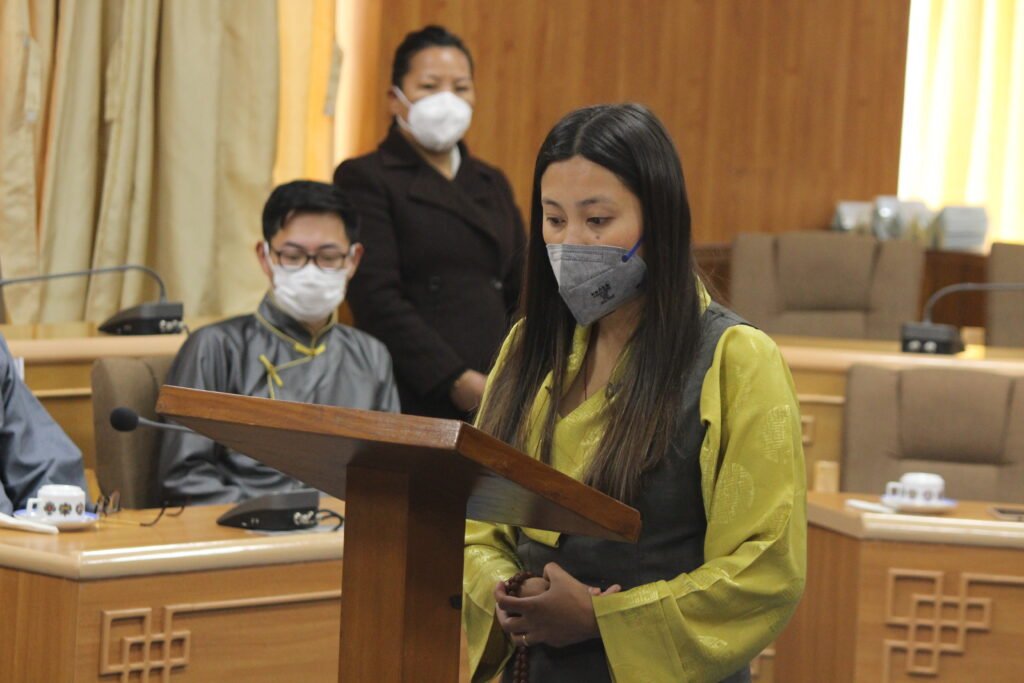



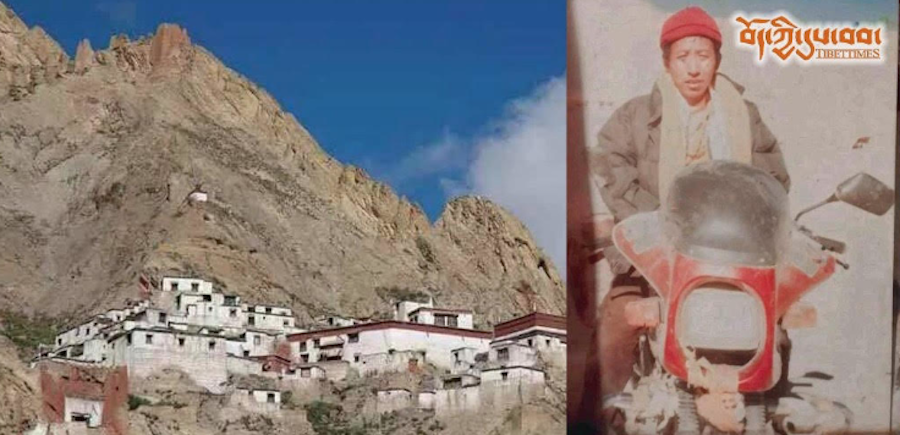
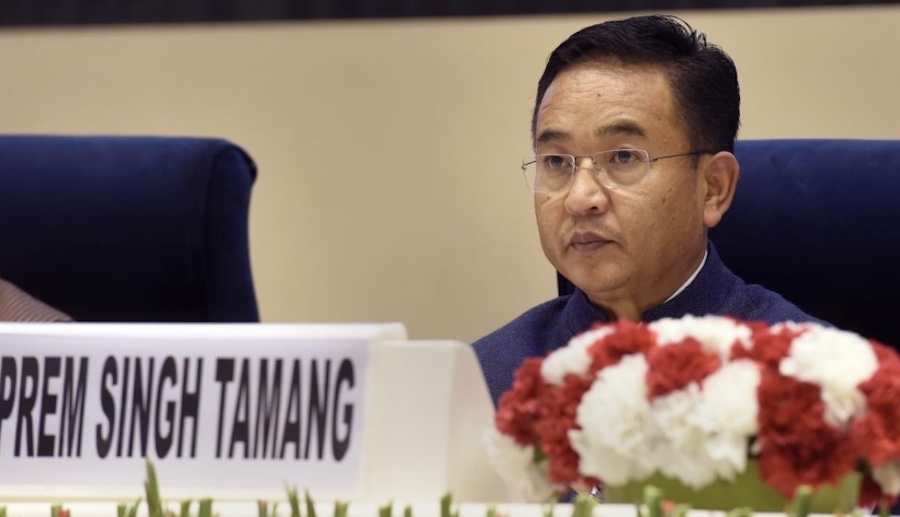
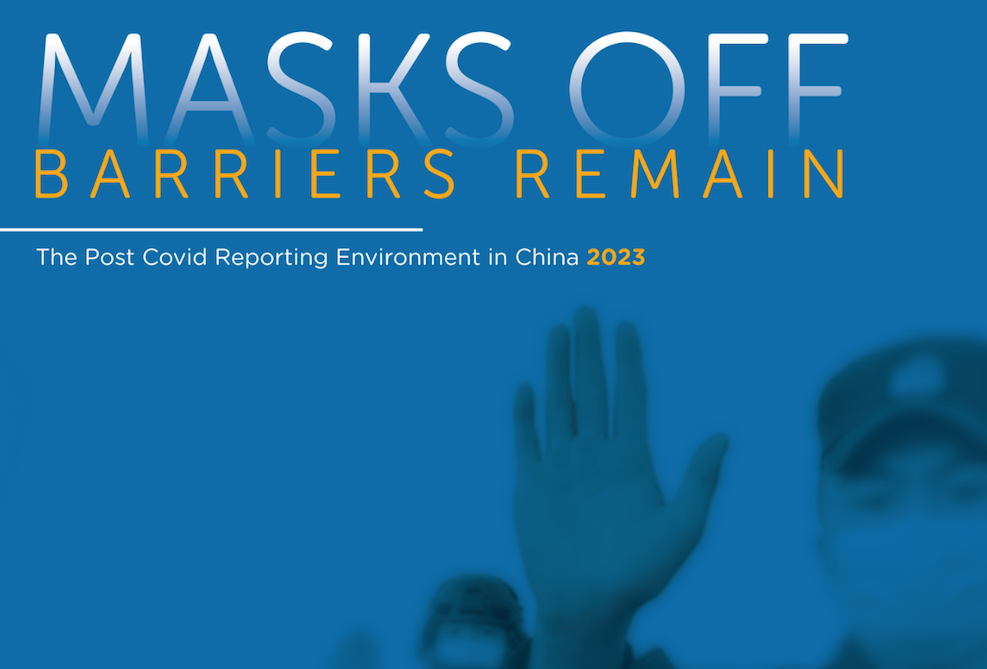
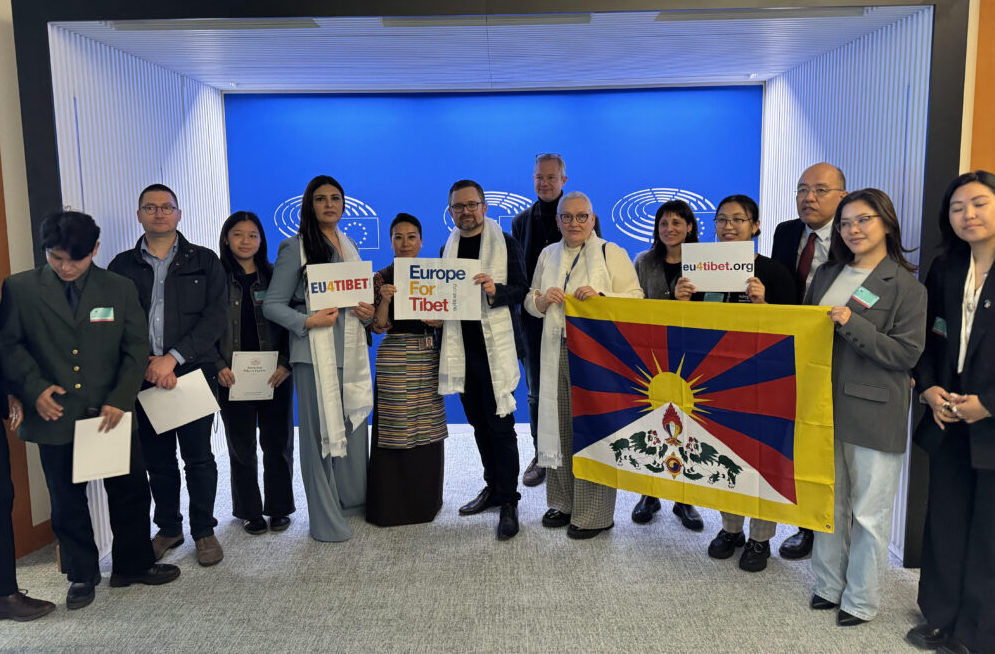
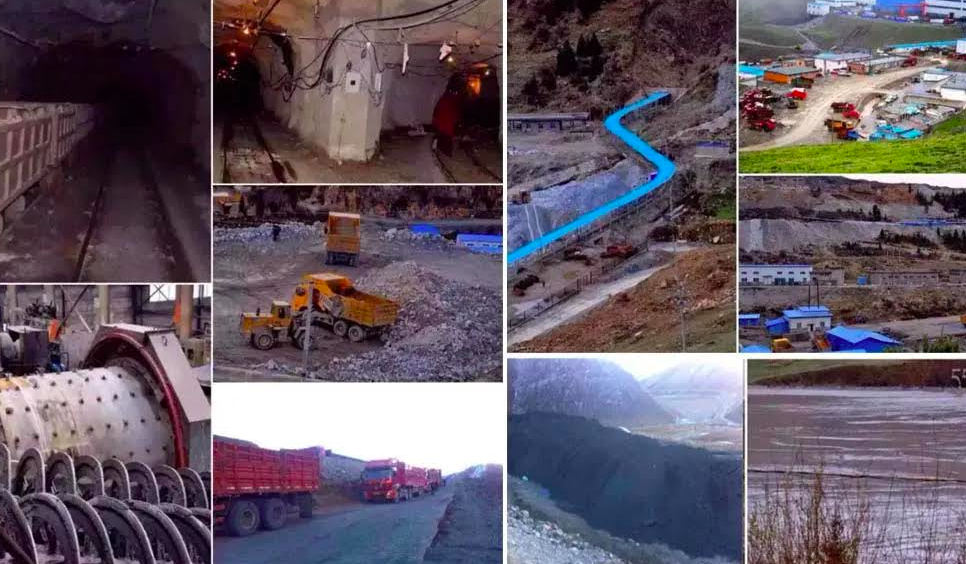
5 Responses
The history of Mongol ruled China and Tibet have been interpreted differently by the Chinese, Tibetans and western scholars. I have based most of my writing on western interpretation of the Mongolian and Tibetan relations. This is because the Chinese version is politically motivated while the Tibetans have often overlooked the treachery and deceit of the Chinese in writing about our history. The relation between Mongol Godan Khan and Kublai Khan and Tibet are strictly relations between two nations known as Mongol empire and Tibetan nation. It has nothing to do with China just as relations between British India and Russia are effectively, Russo-British relations and not India-Russo relations. This is extremely important to make this distinction. The reason is simple. Just as the Chinese were subjects of the Mongol empire and had no right to claim their country as their own, India was under British hegemony and had no role to play in its affairs.
However, the Republican and communist Chinese have deliberately twisted this reality and made Mongol-Tibet relations as Chinese relation with Tibet in order to make outrageous claims over Tibet.
The Chinese interpretation of Mongol-Tibet relation as China-Tibet relation is in fact a monumental fabrication and a total distortion of history. Therefore, just as commie China doesn’t accept the Simla Convention signed between independent Tibet and British India as a legitimate treaty and reject it as a British imperial outreach; any tribute paid to the Mongol Khan (if any) can’t be regarded as tribute paid to China and Chinese claims over Tibet as a result are nothing but imperialist colonial mindset. China was under Mongolian occupation and had lost its own independence!
Coming to the tribute: Godan sent expeditionary force to Tibet in 1240 under Dorta. While normally, these were attempts to demand submission, there is no record Tibet had submitted. This is because he was impressed by the Drikung Lama and wanted to take him to Godan’s camp. But the Drikung Lama avoided the honour and instead recommended Sakya Pandita Kunga Gyaltsen who was very popular at the time. In 1244 Sakya Pandit was invited by Godan and he left with his two nephews; Choegyal Phakpa and Chakna Dorje. It is important to note that Sakya Pandita was not a representative of Tibet. He was going in his capacity as a learned Lama. Dorta withdrew his forces from Tibet in 1241 after the death of Ogodai.
Sakya Pandit’s letter is more about his own submission and in fact, he boasts that Tibet was saved from Mongol invasion because of his subordination to the Mongols. He was used as an agent of the Mongols for Tibet to submit to the Mongols. Even though Sakya Pandit exhorted the Tibetans to submit and pay tribute, some did but others didn’t. There are no records of Tibet submitting to Godan Khan and his Mongol hordes. It is therefore more than likely that those who held Sakya Pandit as their Lama submitted to the Mongols but not others who didn’t follow the Sakya tradition. However, the Chinese historians selectively choose to write in their favour and twist facts and create fictions by randomly claiming Mongol authority over Tibet.
Fortunes changed and Godan Khan’s influence diminished. Sakya Pandit died in 1251 and Mongke Khagan of the lineage of Tolui was ordered to invade Tibet. They stopped short of central Tibet. It may have something to do with retaining the special relationship Godan and Sakya Pandit had struck. Whatever the reason, as I have stated in my previous segment, Mongols have had a peaceful policy towards Tibet throughout the Mongolian empire era. This era is Mongol history and NOT Chinese history. China effectively DID NOT exist and they themselves admit it.
In 1254, Phakpa conferred upon Kublai Khan initiation in Buddhist rituals. As per sacred Buddhist edict, Kublai Khan accepted Phakpa as his GURU (རྩ་བའི་བླ་མ་). This requires the chela or disciple to accept the superiority of the Guru in comparison to himself. Besides as per Buddhist decree in Guru-chela relationship, Phakpa demanded Kublai Khan to prostrate to Phakpa and he did. As mentioned in my previous piece, owing to the bond of Guru-chela relationship, Kublai Khan never demanded tribute from the Tibetans nor the Tibetans ever did. In fact it was Sakya Pandit who banned the cruel practice of throwing Chinese babies into the yellow river every twelve years as a means of population control. Tibetan Lamas have saved millions of Chinese babies from untimely death. Shakabpa writes: “Throughout the period, the actual administration remained
In Tibetan hands. There was a definite change in the relationship between the Mongol ruler and the Tibetan Lama during Kublai Khan’s reign”. He is speaking about Godan’s threatening letter to Sakya Pandit and the unique relationship developed between Phakpa and Kublai Khan. This the beginning of what is known as priest/patron relationship between the Buddhist Mongol leaders and Tibetan Lamas.
In 822 the Chinese and Tibetans finally concluded a peace treaty as two equal nations after two hundred years of territorial conflict. The treaty confirmed Tibetan territorial gains along the frontier with China. The treaty was inscribed on a stone pillar placed in front of the Jhokang in Lhasa. Tibet was and always will be an independent nation!
As to whether Ngari was under Sakya rule or not, Shakapa Wangchuk Deden has this to say: (Kublai Khan speaks to Phakpa) I must make you a gift. This letter, then is my present. IT GRANTS YOU AUTHORITY OVER ALL TIBET, ENABLING YOU TO PROTECT THE RELIGIOUS INSTITUTIONS AND FAITH OF YOUR PEOPLE AND TO PROPAGATE LORD BUDDHA’S TEACHINGS!
Gyal Chepa, being eloquent in English doesn’t mean you are expert is history. You are narrating history like Grandpa telling a story which has no base at all. History is not a Gyesar story. There cannot be two top rulers in one country simultaneously. If Chosgyal Phagpa ruled entire Tibet during his time then how could Guge Kingdom survived independently ruling Ngari regions until Fifth Dalai Lama was enthroned to rule Central Tibet. If your entire Tibet is referring to those Trikhor Chusum where Chosgyal Phagpa ruled then may be you are right at some point. History can not fabricate nor narrates what suits to present situation. It is a past happening and it has to maintain its authenticity. Telling the fact does not divide the unity but it is correcting the mistakes. Do you have any single evidence that the word Cholkha used prior to 1960 by the Free Tibet government? Do you have any authentic narrations against the evidence of revenue being collected by Yaun dynasty in Tibet? A letter from Sakya Pandita to the Tibetans who were subject to submit revenue to Khans were advised to pay tribute on time and do not upset Khan, haven’t you heard. Read Khan’s annal, rGya yi yig tsang, Ngor chos ‘byung, rGya bod chos srid zhung ‘bral etc. are the evidence that Khans collected revenue for several years even after the Sakyapa hierarchy lost authority in Central Tibet. The truth is always sour and it won’t become sweet. When I mentioned Ngari, I am literally talking about all regions of Ngari during those days and their history. You cannot relate U-tsang Cholkha with these regions during the time of Chogyal Phagpa as he did not rule over these territories nor Khans did collect any revenues as it did in many regions of Tibet. Hiding the fact and making suitable to the present situation is a deceitful to new generation.
When we write about the history of Tibet, we must be very careful to stick to facts and must sift facts from fabrications and innuendoes that are purposely spread by the CCP to dilute facts, confuse people and peddle lies as the truth. The Chinese communists are masters of deceit and deception while the Tibetans lack the cunning and deceit.
The Mongol Yuan Dynasty never invaded Tibet. Whether it is the sheer vastness and wilderness of the country or because of religious or racial affinity, the conquering Mongols left Tibet alone!!! This is a fact! The Chinese claims are pure fabrication and a figment of their imagination. Tibet had never paid tribute nor the Yuan demanded it. The Chinese communist claims are politically motivated and is manufactured heresy.
The CCP is known to re-write history such as its murder of eighty million people is attributed to Gang of Four. The lie such as “not a single student was killed” at the 1989 Tiananmen square massacre, illegal occupation of Tibet through military conquest of Tibet as a “peaceful liberation” and attributing victim complex to itself by claiming, China as a “victim of foreign invasion” when in fact it is the greatest aggressor in Asia.
Owing to the difficulty of proving Chinese sovereignty over Tibet, they have indulged in incessant lies. First, they claimed they were “driving foreign imperialists” from Tibet when in fact there were only four foreigners such as Robert Ford who was appointed by the Government of Tibet to be the radio operator in Chamdo. Heinrich Harrer, his friend Aufschnaiter and the Consular General of India Hugh Richardson.
When that didn’t go down well, they concocted a dark story of Tibet as “living in slavery” and that they were the good guys to end the this alleged fictitious imagination and peddle it as “liberation”.
They also tried to patch their fictitious stories with Princess Wengcheng’s marriage to the Tibetan Emperor Songtsen Gampo which is so pathetic, it’s an object of derision. In that case Nepal could argue the same since Nepali Princess Birkuti Devi also married Songtsen Gampo.
Since none of their fabrications have any veracity and has failed to convince the world, they have resorted to another lie that Tibet was “part” of China from “ancient times”!!! This is peddled in order to fool the world without having to explain anything!!!! This is the kind of duplicity the CCP applies to fool the world about their baseless claims on Tibet.
Drogon Choegyal Phakpa was offered བོད་ཁྲི་བསྐོར་བཅུ་གསུམ་ as offering during a mandala offering when Kublai Khan received an initiation. That is how, the Sakya Lama’s came to rule Tibet. “Choegyal Phakpa desired sovereignty of Tibet and Tibet was NOT PART OF THE KHAN’S domains”. These are words of British diplomat and historian Louis Magrath King who was consul General at Thartse Do (Tachienlu).
The word ཆོལ་ཁ་ probably is a Mongolian word which was borrowed from the Mongolian lexicon but it doesn’t denote subservience to the the Mongol rulers of China. Language is borrowed from nation to nation. Tibet and Mongol China became equal partners with the Mongol Emperors moral support in recognition of Choegyal Phakpa’s supremacy in return for giving spiritual guidance and sustenance to Kublai Khan. It was a convenient mutual dispensation. This enabled the hegemony of the Sakya hierarchy to establish themselves as the undisputed rulers of Tibet. This is succinctly clear from history and Tibetans must not get influenced by CCP propaganda.
Choegyal Phakpa ruled over whole of Tibet and there is no evidence to suggest that any part of Tibet was not under Sakya ruler’s control. In any case, I don’t see any reason why you are bringing this issue when we are talking of unity of the three cholkas. On the one hand you talk of unity but on the other hand you are trying to split hairs by parroting Ngari as being seperate from U-Tsang! You can’t run with the hare and hunt with the hounds!
In the 1980s, the Kongpo people divided themselves with a section of them claiming to be part of Dotoed led by a guy called Athar Wangyal. It created unnecessary discord in the exile community and did nothing to further our cause. I think the མངའ་རི་ people should not be misled by extremists who again wants to divide us for no good reason. If some prominent Ngari leaders have suffered exclusion and marginalisation, it’s not U-Tsang who is responsible but the politics of division in our exile community. A rising star like Sharling Dadhon was shot down by the politics of envy by the aspiring political leaders during the 2016 elections. I admit it’s a great loss and we must bring her back to our leadership role in the coming years. Likewise, Pema Jungne and Acharya Yeshe Phuntsok were equally undone by the same people for the same reason. It wasn’t done by U-Tsang. What you must realise is that the elder generation must inculcate a sense of unity in our young people instead of division and discord. Creating division helps nobody and it is only diminishing ourselves and making our enemy rub their hands with glee!
The term Cholkha is used by the Peking base Yon dynasty in order to collect revenue in the Tibetan areas that went under the political control of Kublai Khan. In fact, most of the modern historians accept Yon dynasty is a part of the Chinese history and no doubt using the term Cholkha since 1960 by the exile government is voluntarily submitted ourselves to Chinese sovereignty over Tibet that established in 14th centaury. When three regions, U-Tsang, Kham and Amdo use the term Cholkha, it sacrifice Ngari regions to Chinese history whereas Ngari regions never lived under Yon dynasty. Ngari regions were divided into few kingdoms such as Guge King, Ladakh King, Balti King, Yartse King and there was no evidence of Yon Dynasty had controlled these areas during its time. There was no evidence that Guge kingdom lived under U-Tsang Cholkha and Chogyal Phagpa ruled these areas. Therefore, Chinese history cannot claim Ngari regions a part of its estate for revenue collection since there are no proper documents that favors Yon dynasty nor exile U-tsang Cholkha hegemony.
If we use term Cholkha, it is good to argue for reuniting or reintegrating all three regions of Tibetan areas under one administration and demand for genuine autonomy as it was granted to Tibetans by Yon dynasty through appointing Chogyal Phagpa as the Top authority in Tibet. Hence, Umay Lam has strong base to argue for reuniting three regions together if Chinese leader understand the core value of history properly. It is my suggestion that TYC, SFT and Rangzen Tsogpas, must use the most appropriate word ‘Bhod Gangchen’ and never use word Cholkha that is given by China’s Yon dynasty. Bho Gangchen claims areas much bigger than Cholkha and we have an opportunity to regain sovereignty that we lost since 14th century.
It’s hoped that the younger generation will participate more in our parliament and bring fresh ideas and a new dynamism and a new outlook to the whole trajectory and discourse on the movement. Owing to the division of election process on the basis of cholkha, it has bedevilled our community with the constant discord based on cholkha politics. This is exacerbated by the sinister and diabolical underhand of the CCP to create disunity and discord among our community to weaken and discredit the exile Government.
Creating an election on the basis of cholkha obviously had a political message that the Government in Exile represents all three provinces of Tibet as well as the five major religious traditions when it was first initiated. When the Charter of the Tibetan exiles was adopted by the Assembly of Tibetan People’s Assembly on June 14th 1991, there was a call by the Tibetan Youth Congress to abolish election on the basis of cholkha and instead to vote candidates on merit irrespective of cholkha and choeluk affiliations. Unfortunately, Dotoe and Domed cholkhas resented this suggestion saying, since they have smaller population in the exile diaspora, they will lack “proper representation” in the parliament. This was under the premise that all the distinct Choelkas were biased against each other and voted candidate who showed more concern for their cholkha than the general public!
It may have been a well founded fear at the time but thirty one years later, another fear may be overtaking the same communities as a result of the present election rendition. The slogan of the 2021 Sikyong candidate, Kaydor Agutsang was “ONE TIBET”. This shows there is growing unease among the people of Eastern Tibet that certain groups among the Central Tibetans are pushing for a different agenda! The Rangzen and U-May Lam has become such a polarising issue precisely because many Amdowas and Khampas feel there is a perceptible change in the outlook of some U-Tsang hardliners to ditch the Easterners. This was never the perception among the diaspora from 1959 until well into the beginning of the twenty first century. The Chinese communist Party has been relentlessly pursuing a policy of divide and rule ever since Tibet was invaded and occupied. This campaign of creating discord has slowly diminished the unity of the Tibetans especially after they embraced the Shugden followers as their allies.
The Chinese have a saying, “use a foreigner to subdue foreigners”. When they invaded Tibet they used Tibetan communists like Bawa Phuntsok Wangyal to subdue the unsuspecting Tibetans to bring them to their fold. Today, they are using “Western Shugden Society” and it’s adherents among which there are Tibetans mostly belonging to the Kham province. The CCP uses them as their tool. The U-Tsang and Amdo loyalists of the Dalai Lama accuse them of disloyalty and blame them for everything that goes wrong in the Tibetan community! The Khampa community is used as a flogging horse by the fanatical U-Tsang and Amdo bigots just because some of their kind are in that anti-Dalai Lama camp. The CCP uses this divide to create havoc among the Tibetan exiles and makes them disillusioned with the leadership in Dharamsala and lose hope for a free Tibet. This is having a very desultory emotional roller coaster among the Tibetan exile population. There are shock-jog Utubers too who are adding fuel to the fire in order to inflame passions on either side and further distress the population into a toxic mix of despair and desperation. These loud mouths have been spitting venom against all those they despise and more often than not, they happen to be the Kham community.
If we go down this path, we will gradually splinter into different groups and our movement will suffer the terrible shame of dissolution.
Therefore, to salvage and unite our flagging community, we have to bring about a change in the electrol system which would help us to unite rather than divide. To help us prevent the CCP from having a field day in poisoning our community and instead unite ourselves into one people with a single minded goal.
Each cholkha is entitled to have ten representatives but it must be voted by the Tibetan people and not by their respective cholkha constituency as we have now. The cholkhas should have no roll whatsoever in putting forward their candidate but all candidates should be voluntary. This will widen the participation of many young aspiring people to participate in the elections from all three cholkhas. Whoever gets the most in the preliminary votes will be entitled to stand for the final vote to become a chitue. The condition for all aspiring candidates must be sworn to the unity of the Tibetan nation without narrow regional bias and regional affiliation. They must be pan-Tibet crusaders to unite and work for the freedom of the Tibetan nation bequeathed to us by the three great choegyals – Songtsen Gampo, Tri-song Deutsan and Tri-Ralpachen.
Concerning the choeluk chitues, there can be representatives from all five major traditions but they will be voted by the Tibetan public and not the respective religious groups as is done until now. There can be monks and lay people according to the electoral choice of the public. However, this is easier said than done. Their is no substitute to the monks. They are a class apart in scriptural learning, their commitment to the holy Dharma and their intellectual capacity to comprehend the Dharma and the respect they command among the public. Replacing them with ordinary lay people will not only diminish the office of the cheluk chitues but they may become like the CCP appointed “religious affairs ministers” who know nothing about religion!
The public can have a frank discussion about this. Many foreign born Tibetans have little or no knowledge of Buddhism nor are they particularly interested. Even some people who were born under the communist red flag have also been brainwashed to hate the monks so that’s why there is lot of accusations flung at the Choeluk chitues and many are even calling to do away with the them. These are nothing but ignorance of the status of a monk and what they stand for. What these people don’t realise is that the monks are the guardians of the Holy Buddha Dharma. If there are no monks, there is no Buddha Dharma! The essence of Buddha’s teaching is དམ་ཆོས་འདུལ་བ་ (Vinaya). If there is no Vinaya practise there is no Buddha Dharma. འདུལ་བསྟོད་ལས་ ཇི་ལྟར་འདི་ན་ཤིང་རྩ་གཙོ་བོ་སྟེ་ (Like a root of a tree is the fundamental element of a sapling) རྣ་པར་འཕེལ་དང་ཀུན་འཛིན་གཉིས་ཀྱི་གཞི་ (whether it’s going to flourish or not depends upon it)
དེ་བཞིན་དམ་ཆོས་ཚོགས་རྣམས་ཀུན་གྱི་ཡང་ (Likewise, Vinaya is the all important element of the Dharma) གཞི་དང་རྩ་བ་དམ་ཆོས་ཡིན་པར་བཤད་ཅེས་དང་ (Since, it’s the root cause of its flourishing)
སྤྱོད་འཇུག་ལས་ཀྱང་ བསྟན་རྩ་དགེ་སློང་ཉིད་ཡིན་ན་ཅེས་པ་སོགས་མཐའ་ཡས་སོ། །་
From Shanti Deva’s Bodhisattva Acharya Avtara:
The root cause of Dharma is the Bhikshu